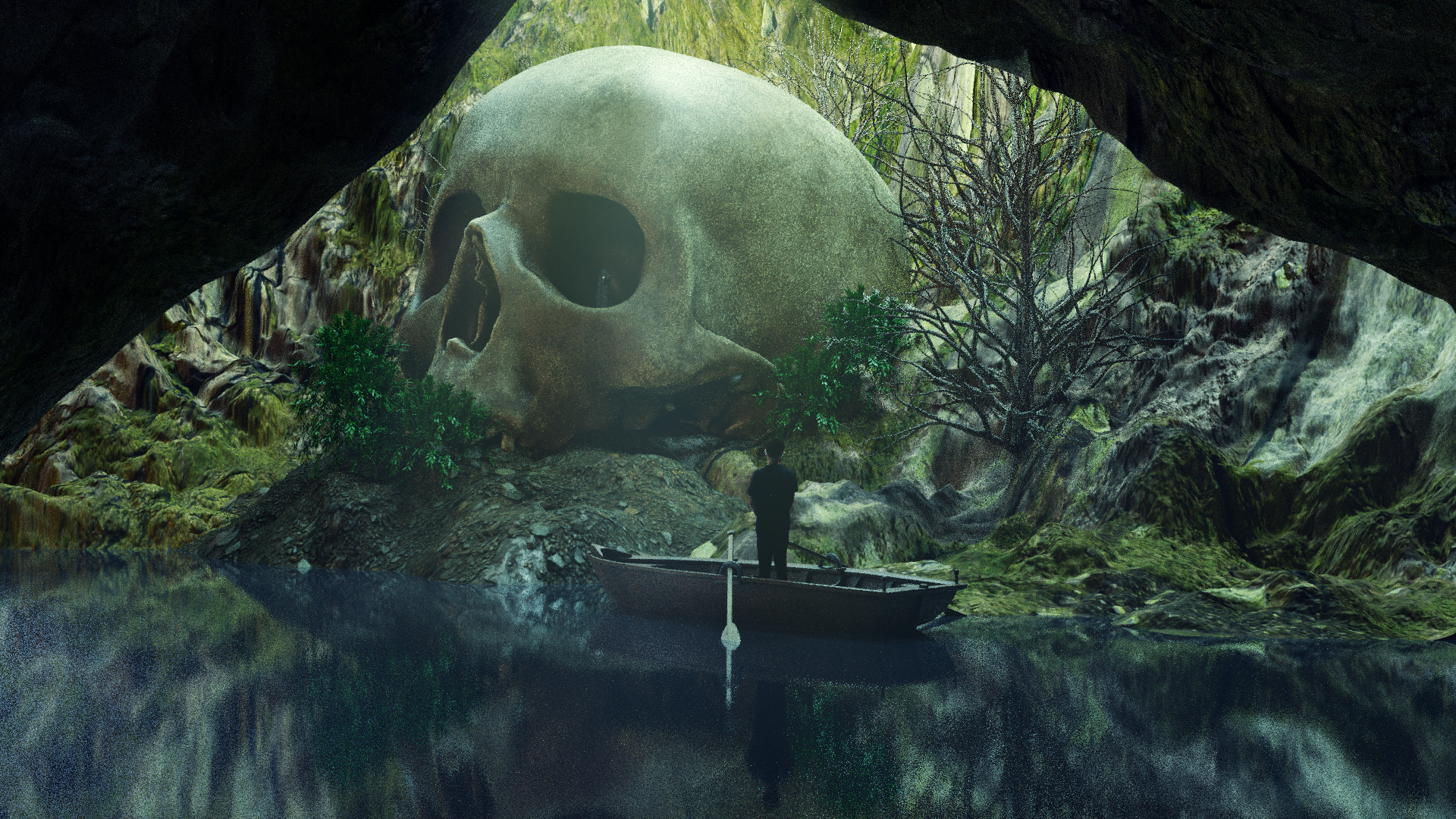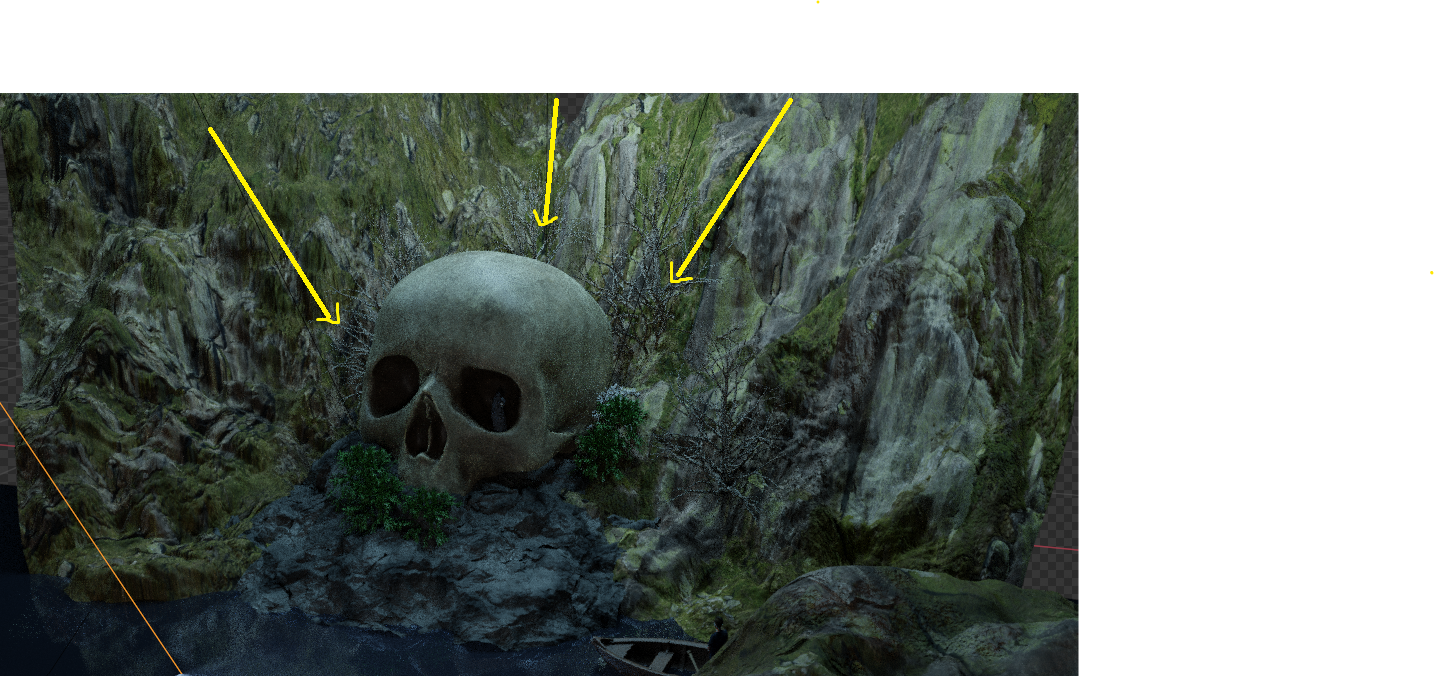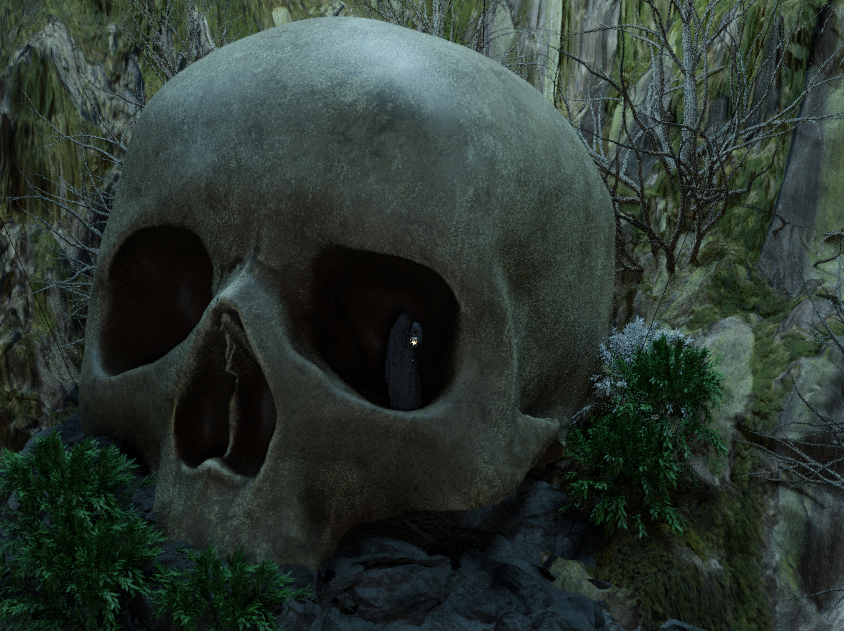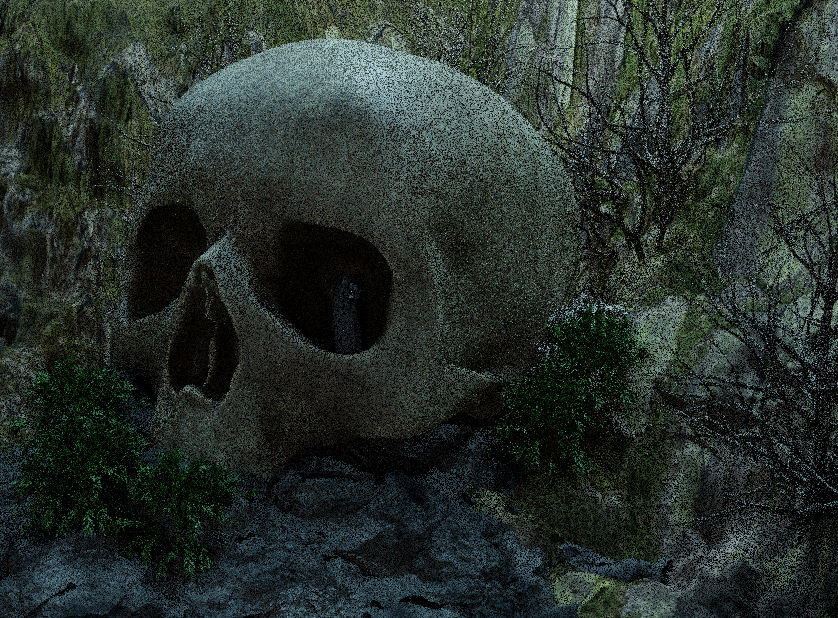Concept

This scene depicts a surreal and ominous landscape. A person stands in a small rowboat, holding an oar and gazing at a massive human skull that is embedded into the hillside of a dense and lush forest. The skull is disproportionately large in comparison to the natural elements around it, creating a sense of being in a fantasy or dream-like world.
The forest appears wild and ancient, with moss-covered rocks and dense foliage that suggest this place is untouched by modern civilization. The water is calm, reflecting the eerie scene and the figure in the boat creates a solitary silhouette against this backdrop. The overarching rock formation and the mist that seems to envelop the scene add to the mysterious and possibly macabre atmosphere.
Process

We started building the scene from the skull which we took from internet, and the found assets that fit to the scene's theme. We tried different combinations of assets but removed unecessary assets and tried our best to make our scene low-poly.
While implementing this feature we faced some challenges such as implementing uniform sampling for the points on the shapes which were being used to design the area lights.
Utilizing the BlenderKit addon was a game-changer; it made the integration of objects into our scene a breeze. We make use of add-ons including ANT landscape, through which we tried to make hills and landscapes, and we also made use of Sculpt tool inside the blander to create a base for our skull. Our initial setup involved establishing the key elements—the towering skull, the man in a boat, and the overarching skull cave structure. These served as the anchors of our composition. Methodically, we built up the scene, element by element, ensuring each piece contributed to the overall atmosphere. We positioned area lights within Blender, adjusting their coordinates to cast the perfect shadows and highlights.


